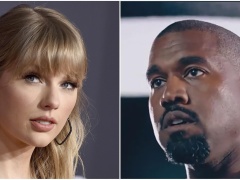
Nature documentaries, true crime, even controversial stories of child-sexual abuse — they all need music, and this television season offered composers of varied backgrounds supplying outstanding scores.
“Really, you’re writing a concerto for dialogue,” says Michael Abels (“Get Out”), whose first-ever doc assignment was the HBO series “Allen v. Farrow,” which outlined the case against Woody Allen, whose adopted daughter Dylan Farrow has accused the director of abusing her at age 7.
Most of the music in “Allen v. Farrow” supports the “reporting” segments. “Music helps us hear that part of the story, giving it momentum and direction,” says Abels, who enlisted a 40-member string ensemble to record and perform from Budapest.
The occasional clarinet solo, and ’30s- and ’40s-style big-band numbers, reminded viewers of Allen’s own musical tastes and Manhattan jazz-club performances.
The most sensitive material, however, went unscored. “When you see a little girl talking about what happened,” Abels says, “that does not need more emotional emphasis to resonate with an audience. An extremely light touch is the only solution.”
An actual solved crime, the 2018 murders of a Colorado housewife and her two daughters, was the subject of Netflix’s “American Murder: The Family Next Door,” and it fell to London-based composer Nainita Desai to find the right musical approach.
“For me, authenticity and treating a subject with integrity is the most important thing when working on a documentary,” she says. Director Jenny Popplewell “did not want to treat [husband and killer] Chris Watts like a monster. We should be focusing on the victim. [The film] is almost an homage; she’s coming back to life through these first-hand testimonies.”
The pandemic forced Desai into a more intimate sound to tell the story: five string players from the London Contemporary Orchestra plus her husband on bass, along with a unique use of percussion.
Throughout the film, Shanann Watts’ many text messages to her husband and friends are depicted on screen. “I played the mobile phone as a musical instrument, creating percussive rhythms by tapping on the phone with my fingers,” says Desai. “It was a way to connect the audience with what was happening on screen. It helps bring those moments to life and seem more visceral and real.”
Two David Attenborough-hosted nature films also loom large in this year’s documentary-score category: “David Attenborough: A Life on Our Planet” and “A Perfect Planet,” with music by British composers Steven Price and Ilan Eshkeri, respectively. Both are veterans of Attenborough docs (“Our Planet” for Price, “Great Barrier Reef” for Eshkeri).
The 90-minute “A Life on Our Planet” is more of a personal essay, Price points out. “It’s the first time David has stood in front of the camera and said what he thinks, been honest about the realities of it all [Earth’s environmental crises]. So the music had to feel appropriate for him. His own record library contains a lot of chamber music, on a smaller scale than we’ve done on the big natural history shows. That was my starting point.”
Price managed to record it all just before the London lockdown March 2020 — 38 musicians in Abbey Road’s Studio 2, all strings and a group of hand-picked soloists. “On day two, David came in and gave the most brilliant speech. We started the next take and it [was] three times louder than it was before he spoke!”
Eshkeri’s 5-year-old daughter helped him decide on the sound for the five-hour “Perfect Planet.”
As he was writing the main theme — “about Mother Nature, the planet Earth, a quite simple, almost hymn-like piece” — he discovered that his daughter began singing it around the house.
He arranged for children’s choirs from six London schools to perform it. Two episodes were recorded prior to the lockdown, so the remaining ones featured a string section recorded in Iceland and various brass and woodwind soloists playing remotely in their homes, all mixed together. “It ended up being more orchestral than I had intended,” he says, “but all the pieces started off with keyboards and guitars, more like a pop approach, so it didn’t matter that we couldn’t get all the instruments in a room at the same time.”






